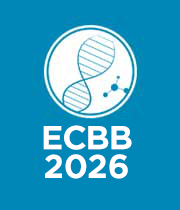Title: Implementation of microfluidic phase separation methods and supramolecular host-guest interactions for rapid detection of allergies
Abstract:
Microfluidic Phase separation exploits the manipulation of fluid flow and the interaction of different phases to isolate and concentrate the target analytes from complex biological samples. In this paper, we review the recent progress in phase separation microfluidics for allergy detection, focusing on three main aspects: (1) blood plasma separation, (2) magnetic, electrophoretic, or acoustic separation methods, and (3) geometric structure design. We first discuss the microfluidic geometries and mechanisms involved in effective blood plasma separation, which is a vital step for eliminating substrate interference and cross-reactivities of components other than IgE with the allergens (remove or reduce the influence of other substances that could interfere with the detection of specific antigens (allergens) by the IgE antibodies). We then describe the microfluidic magnetic, electrophoretic, and acoustic separation methods to enhance the separation efficiency and reduce the size range of particles. Additionally, we highlight the geometric structure design of passive label-free microfluidic systems for biological micro-object separation, which can alter particle trajectories and improve overall chip performance by achieving high-throughput and high-purity separation of IgE from the plasma components. Finally, we discuss the rapid detection process of allergies by transferring the highly concentrated solution of IgE into the allergen-immobilised microfluidic chamber, where a reaction with the allergen occurs if the individual is allergic. After the allergen chamber, a supramolecule chamber is designed where calixarenes assemble to imprison the allergen-IgE complex, forming a carcerand. The carcerand undergoes self-functionalization during the trapping process, providing an azide functional group after the assembly of the carcerand is finished. A key feature of our proposed method involves click chemistry, where the azide group on the carcerand undergoes a rapid click reaction with the DBCO-based dyes, forming a highly stable triazole ring, resulting in distinctive colouration. Notably, for non-allergic individuals, the reaction ceases as the calixarenes do not form carcerands, ensuring accurate discrimination between allergic and non-allergic cases. We summarise the main results and findings of each aspect and compare them to existing methods in terms of performance, cost, and feasibility. We conclude by discussing the challenges and opportunities of a collaboration of phase separation microfluidics with host-guest chemistry for rapid detection of allergies and other potential applications
Audience Take Away Notes:
- The knowledge imparted by this paper offers a nuanced understanding of microfluidic phase separation techniques, empowering the audience with practical applications in allergy detection. Researchers and practitioners gain insights into optimizing allergy diagnosis through innovative methodologies. By delving into microfluidic geometries and mechanisms, they can refine blood plasma separation techniques, crucial for eliminating interference in allergen detection. Additionally, comprehension of magnetic, electrophoretic, and acoustic separation methods enables the enhancement of separation efficiency and particle size range reduction, vital for improving sensitivity and specificity in allergy testing. The paper's emphasis on geometric structure design fosters the development of passive label-free microfluidic systems, facilitating precise particle trajectory alteration and achieving high-throughput, high-purity allergen isolation from plasma components. Furthermore, the elucidation of rapid detection processes, involving carcerand formation and click chemistry, equips practitioners to devise rapid, reliable allergy testing devices. Comparative analysis of results aids decision-making, allowing informed adoption of phase separation microfluidics for allergy diagnosis. Ultimately, this knowledge empowers the audience to advance allergy detection methodologies, develop innovative diagnostic tools, and enhance patient care through more accurate and efficient allergy diagnosis and management
- Improved Allergy Detection Accuracy: By employing microfluidic techniques, the method promises more accurate allergy detection by eliminating interference and cross-reactivities present in traditional detection methods. This is crucial for healthcare professionals tasked with diagnosing allergies accurately
- Enhanced Efficiency: The use of microfluidic magnetic, electrophoretic, and acoustic separation methods improves the efficiency of separation processes, allowing for quicker and more reliable detection of allergens. This can save time and resources for healthcare providers, potentially leading to faster diagnoses and treatments
- High-throughput and High-purity Separation: The geometric structure design of microfluidic systems aims for high-throughput and high-purity separation of IgE from plasma components. This can streamline laboratory workflows and improve the quality of allergy testing results
- Rapid Detection Process: The proposed rapid detection process expedites the identification of allergies by efficiently trapping allergen-IgE complexes and utilizing click chemistry for distinctive coloration. This speed can be invaluable in emergency situations or in clinics with high patient volumes
- Accurate Discrimination Between Allergic and Non-Allergic Cases: The ability to accurately discriminate between allergic and non-allergic individuals based on the cessation of reaction for the latter ensures precise diagnoses, preventing unnecessary treatments or interventions for non-allergic individuals
- Cost-effectiveness and Feasibility: By comparing the performance, cost, and feasibility of the proposed method with existing techniques, healthcare professionals can make informed decisions about adopting this innovative approach, potentially leading to cost savings and improved resource allocation
- Research Expansion: Faculty members working in the fields of microfluidics, biomedical engineering, analytical chemistry, or allergy detection could find this research valuable for expanding their own investigations. They could build upon the methodologies and techniques described in the paper to further explore related topics or to develop new technologies for allergy detection or other bioanalytical applications
- Teaching Enhancement: This research could also serve as a valuable educational resource for faculty members teaching courses in microfluidics, analytical techniques, or biomedical engineering. They could incorporate the concepts, methodologies, and findings discussed in the paper into their curriculum to provide students with real-world examples and applications of the principles being taught
- Interdisciplinary Collaboration: The interdisciplinary nature of the research, combining microfluidics with host-guest chemistry for allergy detection, presents opportunities for collaboration among faculty members from different departments or research areas. Faculty members with expertise in microfluidics, chemistry, biology, and biomedical engineering could collaborate to further advance the field and explore new research directions
- Practical Applications: Faculty members could also explore the practical applications of the research findings in various industries, such as healthcare, biotechnology, or diagnostics. They could work with industry partners to translate the research into commercial products or technologies that have real-world impac
- Improved Sensitivity and Specificity: The microfluidic phase separation method allows for the isolation and concentration of target analytes (such as IgE allergens) from complex biological samples, which can enhance the sensitivity and specificity of allergy detection compared to conventional methods
- Miniaturization and Integration: Microfluidic devices enable the miniaturization and integration of various processes, including sample preparation, separation, and detection, into a single platform. This integration streamlines the design process and reduces the complexity of the overall system
- High Throughput and Automation: The geometric structure design and passive label-free microfluidic systems described in the abstract suggest the potential for high-throughput and automated operation. This can increase efficiency and reduce the need for manual intervention, making the designer's job more efficient
- Rapid Detection: The rapid detection process described, involving the use of click chemistry for colorimetric detection, offers the possibility of quick results compared to traditional methods, which often require longer processing times
- Selective Detection: The ability to discriminate between allergic and non-allergic cases based on the cessation of reaction for non-allergic individuals demonstrates a selective detection capability, which is crucial for accurate diagnosis
- Improved Accuracy of Design: By utilizing microfluidic phase separation techniques, the design aims to enhance the accuracy of allergy detection by isolating and concentrating target analytes (specifically IgE antibodies) from complex biological samples
- The use of microfluidic geometries, magnetic, electrophoretic, or acoustic separation methods, and passive label-free microfluidic systems with specific geometric structures all contribute to refining the accuracy of the separation process
- The incorporation of click chemistry for rapid detection provides a reliable means to distinguish between allergic and non-allergic cases, thus improving accuracy in diagnosis
- The abstract introduces novel techniques such as the formation of carcerands using calixarenes and the utilization of click chemistry for rapid detection, which may provide innovative solutions to existing design problems in allergy detection
- Additionally, the discussion of collaboration between phase separation microfluidics and host-guest chemistry suggests new avenues for improving detection methods beyond allergies, potentially addressing a broader range of design challenges in biosensing and diagnostics
- Comparative analysis of the proposed methods with existing techniques offers valuable insights into their performance, cost-effectiveness, and feasibility, aiding in informed decision-making during the design process
- Enhanced Sensitivity: The use of microfluidic phase separation techniques can potentially enhance the sensitivity of allergy detection by concentrating target analytes, such as IgE, from complex biological samples, thus improving the signal-to-noise ratio
- Reduced Sample Volume: Microfluidic systems often require smaller sample volumes compared to traditional methods, which can be advantageous when dealing with limited sample volumes or when conducting high-throughput screening
- Faster Analysis: Microfluidic systems are known for their rapid analysis capabilities due to the small length scales and efficient fluid manipulation, leading to quicker results compared to conventional techniques
- Automation: Microfluidic devices can be designed for automation, reducing the need for manual intervention and potentially improving the reproducibility of allergy detection assays
- Integration: Microfluidic platforms allow for the integration of multiple functions (e.g., sample preparation, separation, detection) within a single device, simplifying the overall workflow and reducing the risk of sample contamination
- Portability: Microfluidic devices can be designed to be portable and compact, making them suitable for point-of-care testing or field applications, thus enabling rapid allergy detection in various settings
- Cost-Effectiveness: While initial setup costs may be involved, microfluidic systems can potentially offer cost savings over time due to reduced reagent consumption, lower sample volumes, and increased efficiency
- Customization and Flexibility: Microfluidic platforms are highly customizable, allowing researchers to tailor the system to specific applications and experimental needs, leading to improved performance and versatility



